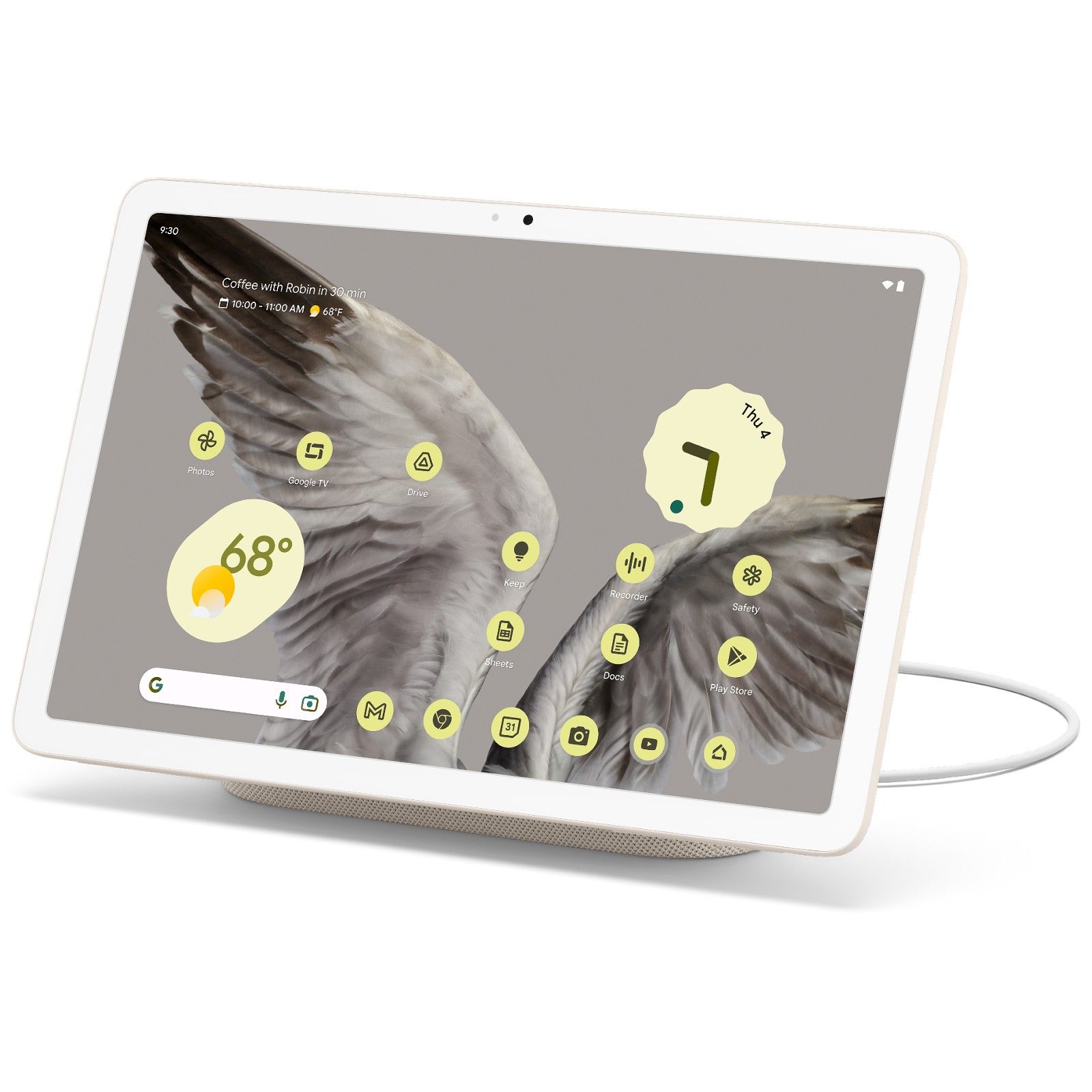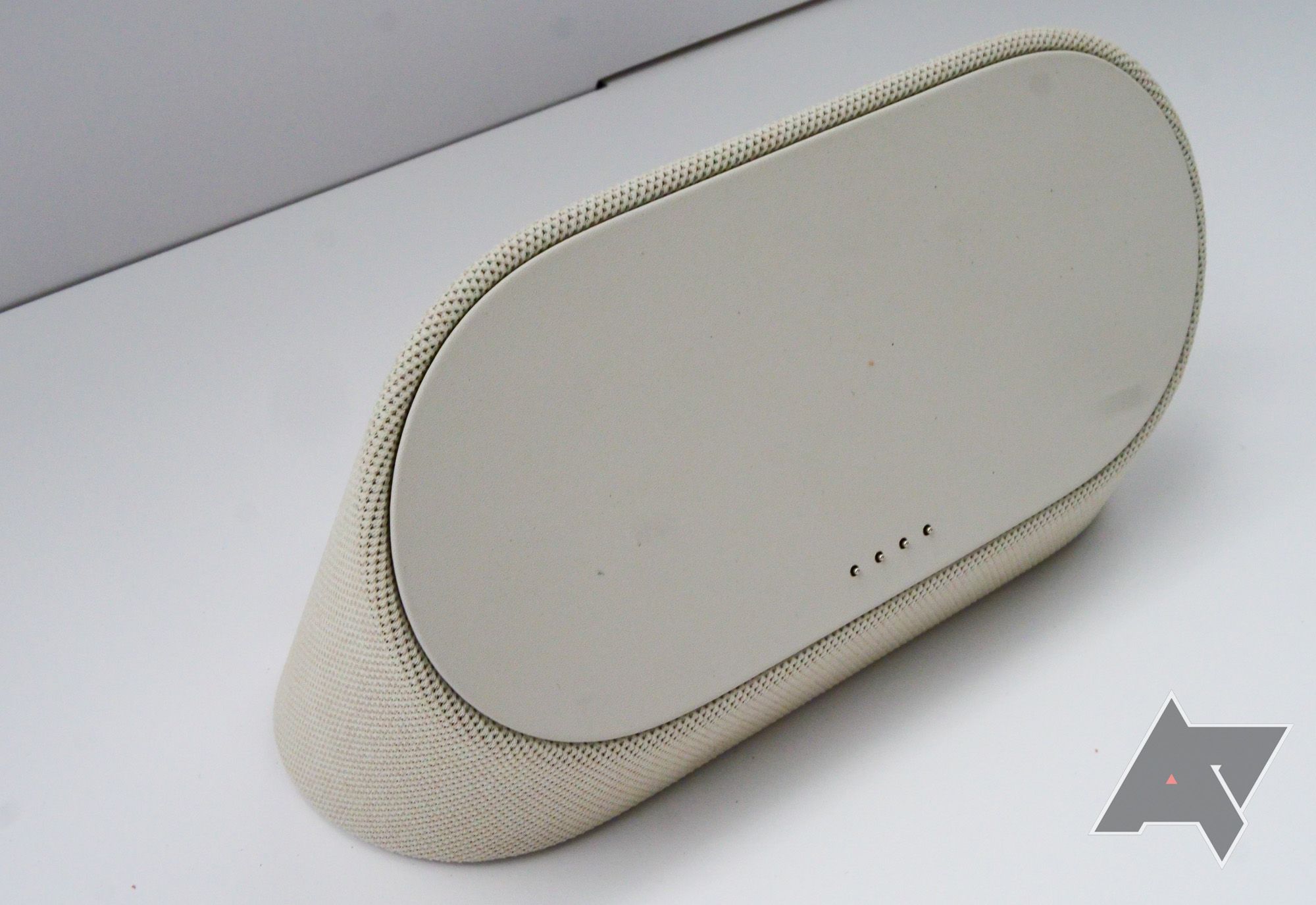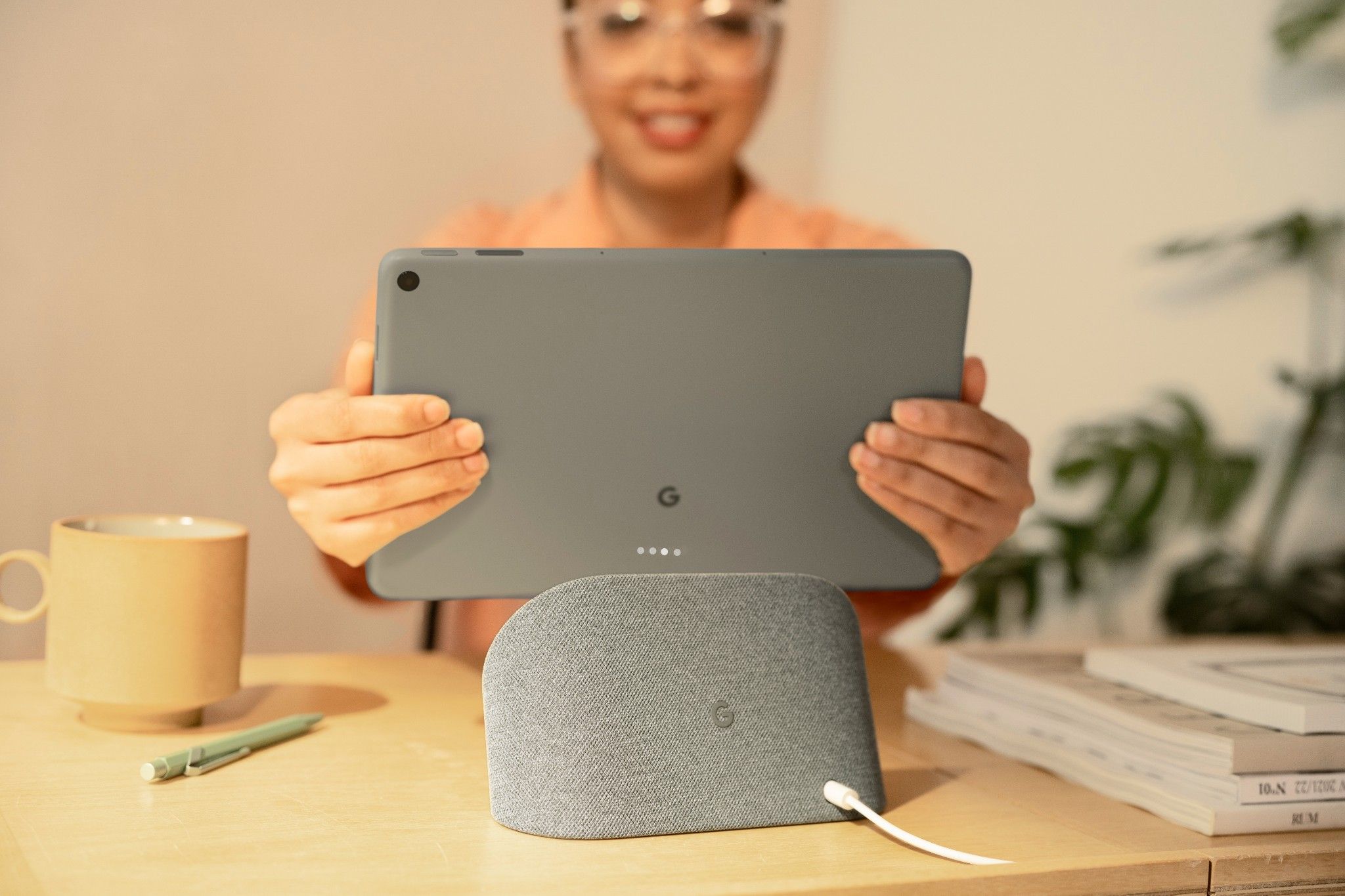Google finally gave us a complete look at its upcoming Pixel Tablet at I/O last week. In all, it sounds like a pretty compelling device, featuring capable specs — a Tensor G2 chipset, 8GB of RAM — at a price you could safely call midrange: $499. One of the most interesting things about the tablet, at least on paper, is that it's bundled with a dock that both charges the device and augments its audio output. That's a tantalizing idea we're eager to thoroughly test, but based on early info and our own hands-on time, the dock is shaping up to be a real disappointment.
The Charging Speaker Dock, as it's formally known, is meant to do a few things. It is, as its name implies, both a charger and a speaker: when the Pixel Tablet is docked, it delivers power through spring-loaded pins and its audio is routed through the dock's speaker, giving your music a little more "oomph." Docking the Pixel Tablet also enables what Google calls "hub mode," a software feature that triggers the slate to operate like a Nest Hub smart display. While in hub mode, the Pixel Tablet can cycle through Google Photos slideshows, control smart home gadgets with just a couple of taps, and take Hey Google voice commands. It all seems very slick.
The Charging Speaker Dock's sound is powered by a 43.5mm driver — the same size as the one in the smaller Nest Hub.
But based on our hands-on time with the tablet, the speaker inside the dock just doesn't sound all that great. After trying the Pixel Tablet at I/O, AP's Will Sattelberg came away unimpressed with the contraption: "I'm not convinced the dock is louder than even a Nest Mini," he wrote, "and frankly, I was hoping for a little more."
That experience is disappointing, but unsurprising. Google has confirmed that the Charging Speaker Dock's sound output comes from a 43.5mm driver — the same size as the one in the smaller Nest Hub smart display. Driver size isn't the only indicator of audio quality, but it's not a small part of the equation, either. For comparison's sake, the Nest Audio and Nest Hub Max both feature 75mm drivers paired with dedicated tweeters.
What's more, when the tablet isn't attached, the dock doesn't do anything. On its own, it can't take Google Assistant commands or play audio — all that is handled by the tablet. At the very least, Google should give the dock the electronics to put it on par functionally with something like a Nest Mini.
It's not even a powerful charger, topping out at paltry 15 watts. All this could be tempered by the fact that the dock is ostensibly free, positioned as a bonus with your purchase of a $499 tablet. But considering additional docks will retail for a staggering $129 apiece, it's hard to believe including one with every single Pixel Tablet isn't adding something to the bundle's price tag. Otherwise, the standalone Charging Speaker Dock is fantastically overpriced. I have a feeling it's a little of both.
Google's been careful to frame the Pixel Tablet as a tablet first, with some smart home bonus features, rather than a full dual-purpose device that can replace both your iPad and the Nest Hub Max in your kitchen. Only selling the tablet bundled with the dock makes it clear that smart display functionality is a core component of the experience here, and anybody buying the Pixel Tablet to serve as a premium smart home gadget is going to be sorely disappointed by the dock's audio capabilities — and by the fact that it's a paperweight when the tablet isn't attached to it.
Personally, I'm still excited about the Pixel Tablet; I've wanted a tablet running Google's version of Android for years, and I think $499 seems like a fair price. But I have to wonder whether Google could have hit a lower MSRP if it didn't stuff a "free" accessory many users won't want or use in every box. The 10th-generation iPad retails for $449, undercutting the Pixel Tablet by a full 50 bucks. There's no charging dock included with the iPad, of course, but that's kind of my point: if Google were to offer the Pixel Tablet in a configuration without a dock, it seems likely it could better compete with Apple on price while still turning a profit.
On its own, the dock can't take Google Assistant commands or play audio — all that is handled by the tablet.
Time will tell if Google's strategy of bundling a dock with every tablet it sells will play out in a way that makes inroads upon the tablet market at large, but considering the dock's limitations — its comparatively weak audio chops, its slow charging speed, and that it doesn't do anything at all when the tablet's not attached — I think a lot of buyers are going to be let down. Worse, for users who simply don't want a charging dock, the Pixel Tablet comes with what amounts to mandatory e-waste — not a good look for Google.
I love the idea of the Charging Speaker Dock; even if it can't replace my more capable smart speakers, it's a cool concept, and I'm sure I'll get plenty of use out of it. But because the Pixel Tablet can't be purchased without a dock, for anyone who doesn't feel that way, it's a good reason to skip Google's tablet altogether — and buy one from Samsung or Apple, instead.

Google Pixel Tablet
The Google Pixel Tablet marks Google's return to the tablet market after the spectacular failure that was the ChromeOS-powered Pixel Slate. Powered by a Tensor G2 chipset and bundled with a Charging Speaker Dock, it looks like a good buy at $499 — but the lack of a lower-priced option sans dock is a missed opportunity for Google.


